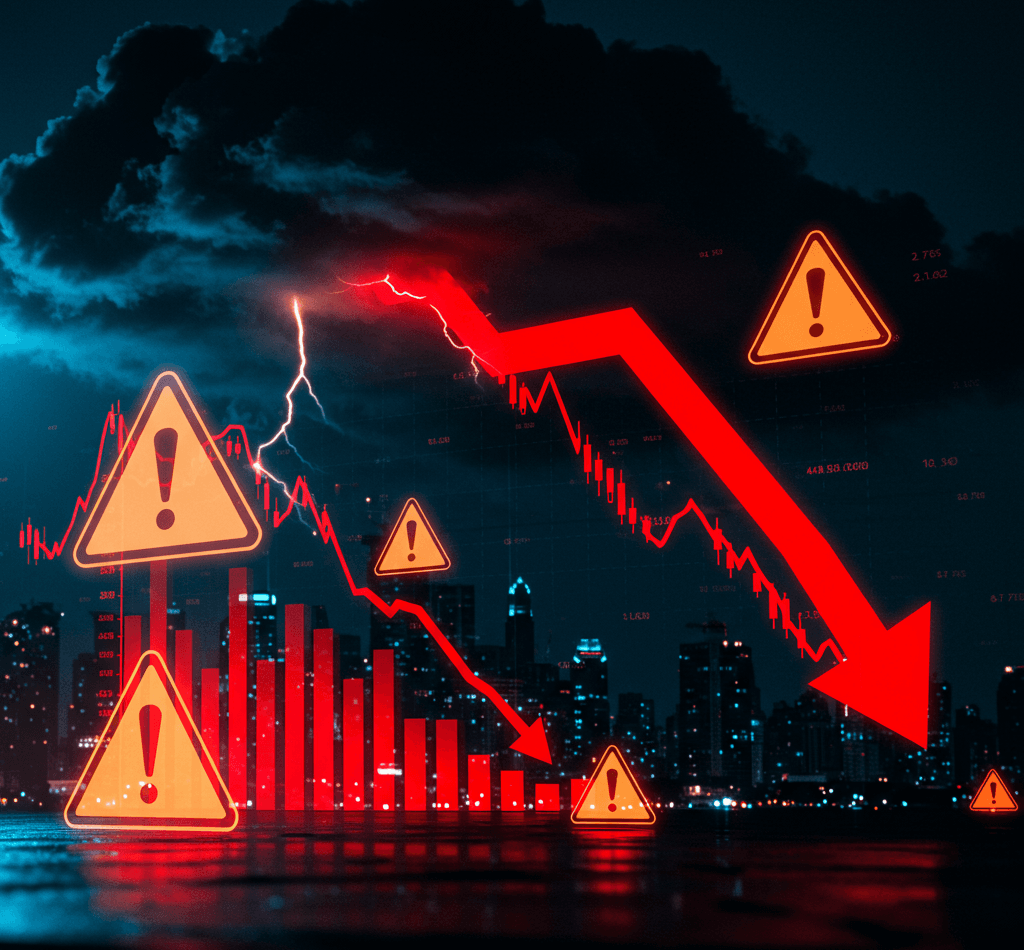The S&P 500 has reached a new peak of 6,173 points, but Bank of America’s chief strategist Michael Hartnett predicts growth to 6,666 points – a critical level before a potential correction. According to the analyst, the combination of accommodative monetary policy, massive capital flows, and record market concentration creates ideal conditions for a speculative bubble in the second half of the year.
Magnificent Seven Controls 33.5% of Entire Market
Stock market bubbles occur when shares become extremely overvalued compared to their intrinsic worth. Current US equities show all warning signs according to Bank of America: the S&P 500’s P/E ratio has reached 25.19, representing the 93rd percentile of historical values. The “Magnificent Seven” stocks account for a record 33.5% of the index’s total market capitalization.
Fed Cuts Rates Only Twice Instead of Four Times
Expectations regarding monetary policy easing have changed dramatically. While markets originally anticipated four Federal Reserve rate cuts over 12 months, current central bank projections suggest only two moves totaling 50 basis points.
Jerome Powell clearly stated: “At this point, we are well positioned to wait and learn more before considering any adjustments to our policy.” Despite this, Trump has called Powell “foolish” and demands rate cuts of “at least two to three points.”
According to Hartnett’s analysis, the key risk is that expectations of expansive monetary policy alone have created conditions for speculative fever in financial markets.
Record Inflow of $164 Billion into Stocks
Capital flow analysis reveals trends that experts consider typical of investment bubble formation:
- $164 billion inflow is heading toward the third-largest annual record in history
- ETF funds recorded a record $164 billion just in November of last year
- April’s reversal brought $46 billion in outflows – the worst monthly result since October 2023
This trend suggests, according to analysts, that global investment firms are beginning to diversify investments from US stocks toward European and emerging markets.
5.3x Valuations Echo Year 2000
Current US stock valuations show similarities to historical speculative bubbles according to Bank of America. The S&P 500’s price-to-book ratio has risen to 5.3x, approaching the 5.5x peak from March 2000 during the tech bubble.
Market concentration has reached levels unseen in the past 100 years according to data. The seven largest technology companies control one-third of total market capitalization, exceeding even the concentration from the dot-com era.
Trump’s Tax Package Adds $3 Trillion to Deficit
Congress approved an extensive tax package that, according to official estimates, will add $2.3 to $3 trillion to the federal deficit over a decade. Bank of America identifies this fiscal stimulus as another catalyst for asset price inflation in its analysis.
A Bank of America survey among institutional investors reveals the following attitudes:
- 81% of respondents expect an increase in government deficit
- Only 33% believe in positive impact on economic growth
- This imbalance creates conditions for an unsustainable bubble in asset prices, according to analysts
BIG Strategy: Bonds, Stocks, Gold
In his commentary, Hartnett mentions an approach he calls “BIG”: bonds, international equities, and gold. In his analyses, he discusses a combination of “long US growth / long non-US value positions,” although recent data shows a significant shift in this trend.
Additional data Hartnett highlights includes Buffett’s market cap to GDP ratio at 170% – significantly above the critical 100% threshold. UBS analysis identified that the US stock market meets 6 of 7 historical conditions typically associated with bubble formation.
Correction to 4,800 Points Means 22% Decline
Hartnett stated in his warning: “Without breakthroughs in trade negotiations and changes in Federal Reserve stance, the S&P 500 could face a steep correction to 4,800 points – representing a 22% decline from February’s peak.”
According to available data, the dollar has weakened 6.1% year-to-date against major currencies. Global fund managers show the lowest dollar exposure since 2005 according to surveys. Analysts currently expect S&P 500 earnings growth of 14.5%, with technology leading at an expected 20.2%, but experts say they face risks from tariffs and rising costs.




